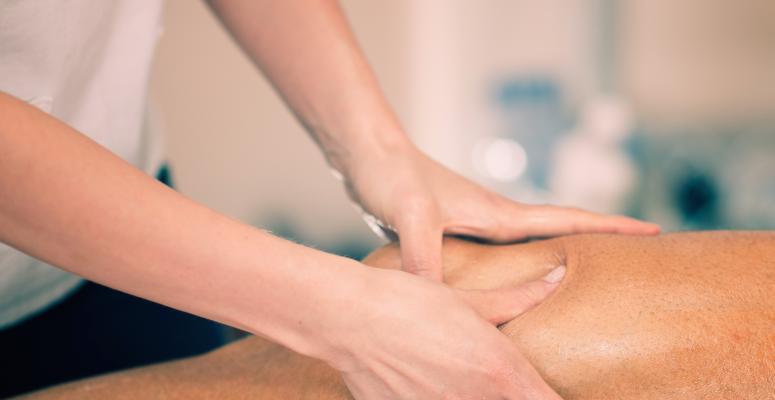
Muscle strains are very common, especially among athletes. In fact, muscle strains account for 31% of all athletic doctor visits. However, some muscle groups are more often torn than others. For example, many muscle injuries occur in the hip abductor muscle group, which is located on the side of the thigh facing away from the body. Abductor muscles are particularly torn by athletes and workers in physically demanding jobs, but you can tear an abductor muscle simply with sudden movement.
If you were diagnosed with an abductor muscle tear, it can be important to know how you can boost your healing process and use physical therapy to maximize your recovery.
What is an abductor muscle tear?
An abductor muscle group works together to rotate your extremities, such as your arms and legs, away from the center of your body. You use these muscles while stepping to the side or getting out of a car. They work in tandem with your adductor muscles, which move your arms and legs back toward your body.
You can tear one of these muscles due to overuse, or if you change direction quickly and suddenly. Symptoms of abductor muscle tears can include:
- Sharp pain.
- Weakness.
- Swelling.
- Limited mobility.
Your symptoms may be similar to those of tendinitis or tendinopathy. These injuries involve full or partial tears of your tendons, which is a type of tissue that connects your muscles to your bones. Your doctor may order an MRI scan to determine whether you tore your muscle or tendon and whether you may need surgery.
The severity of abductor muscle tears are typically graded on a scale from 1 to 3:
- First degree — First-degree muscle tears involve pain without a significant loss of strength or range of motion. In this degree, you may have torn a few muscle fibers and experience a little swelling.
- Second degree — Second-degree muscle tears involve sharp pain and a loss of muscular strength. Your muscle fibers are partially torn.
- Third degree — A third-degree abductor muscle tear involves a complete tear of one of the muscles in the group. You may experience complete loss of strength and mobility, as well as intense pain. Sometimes, third-degree muscle tears require surgery.
You should see your doctor immediately if your symptoms remain after a few days, if you have trouble standing or walking, or if your pain becomes unbearable.
What PT techniques can treat a torn abductor muscle?
While muscle abductor tears can be difficult to deal with, physical therapy can help you heal from an abductor muscle tear. Your physical therapist may introduce you to stretches and exercises that target your torn abductor muscle. They may also teach you proper biomechanics and posture to help you prevent injuring your muscle again.
Physical therapists may use the following techniques to treat your torn abductor muscle:
- Strength training — After an injury like a muscle tear, your muscle and supporting tendons are weak from inflammation and damage. Poor support can mean that simple tasks like walking can be tedious and painful. Physical therapists can show you strengthening exercises that target your torn abductor muscle and surrounding weakness. If your torn muscle is in your hip, your physical therapist can show you ways to strengthen areas like your legs and glutes.
- Joint mobilization — Abductor muscle groups are in close proximity to joints, as they help rotate arms or legs away from the body. As a result, when an abductor muscle is torn, the nearby joint can lose its range of motion. Physical therapists can employ joint mobilization techniques to improve a patient’s range of motion as the nearby muscle heals.
- Soft tissue mobilization — Sometimes, gentle pressure is needed to improve circulation to a muscular injury. Physical therapists can use their hands to stimulate trigger points and nerves around the torn muscle, encouraging the area to decrease inflammation. This technique is known as soft tissue mobilization.
Alliance PTP is ready to help you find top-notch PT for your torn abductor muscle
Do you think you tore an abductor muscle but don’t know where to start? At Alliance Physical Therapy Partners, we’re proudly bringing together physical therapy practices across the country to help people get the high-quality PT they need. Want to see a physical therapist in person? We can put you in touch with an Alliance PTP partner that’s close to you and that can help you address an injured abductor muscle.
Not keen on in-person PT sessions or not close to an Alliance PTP partner? No worries. We also offer effective and affordable virtual physical therapy through our Agile Virtual Physical Therapy platform.
Come find a physical therapist who can help you recover from a torn muscle.
Get Help at a Location Near You
